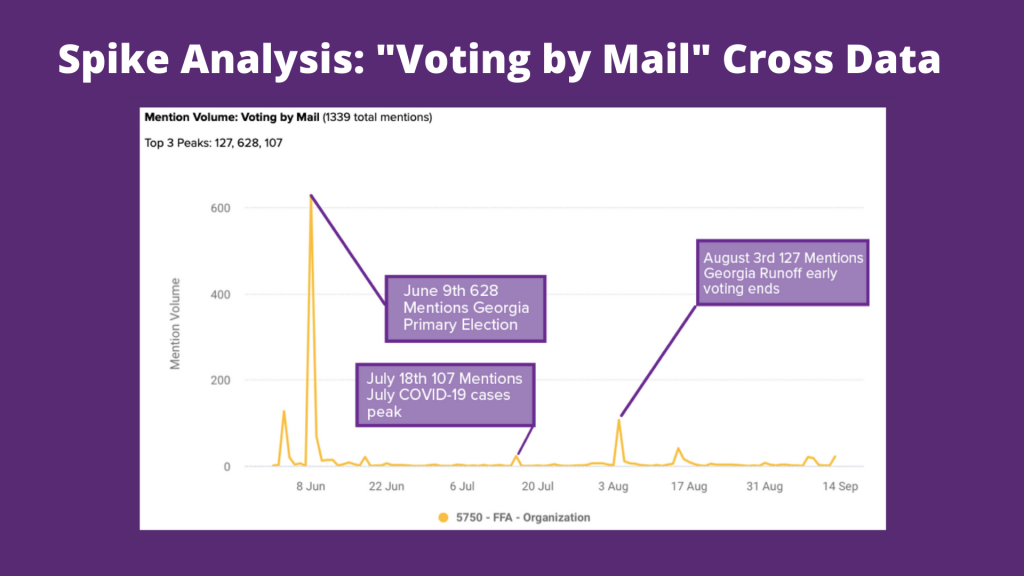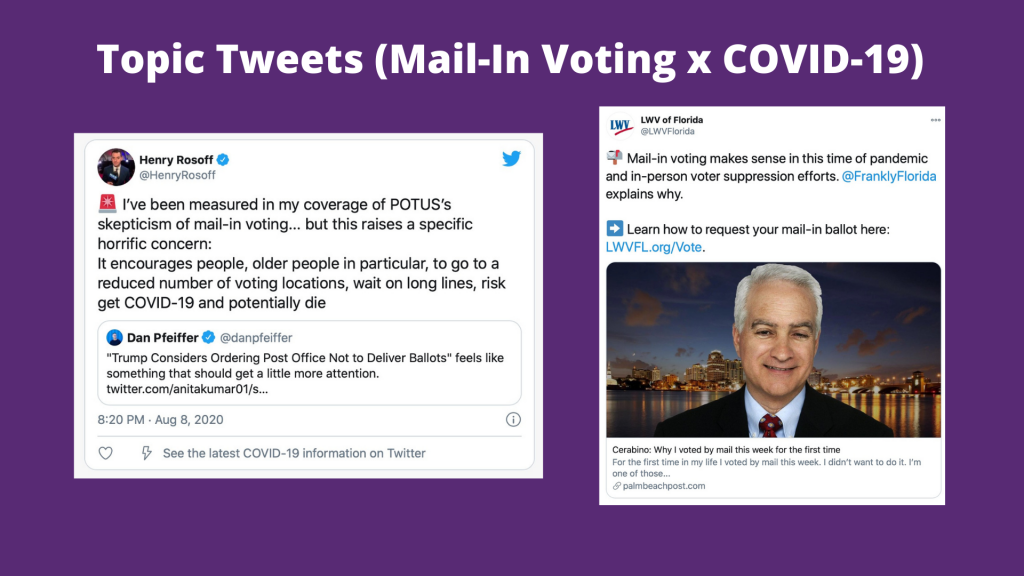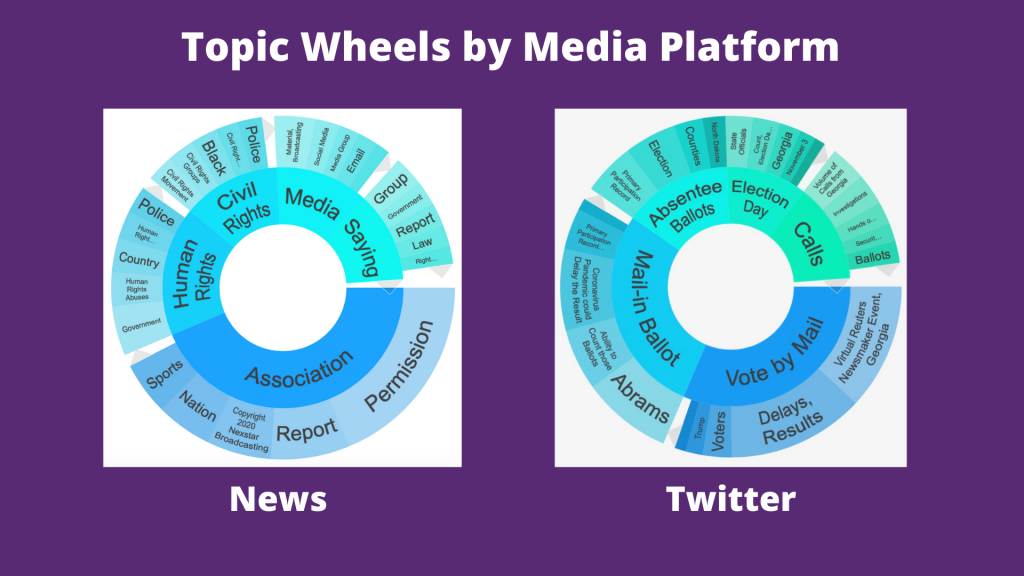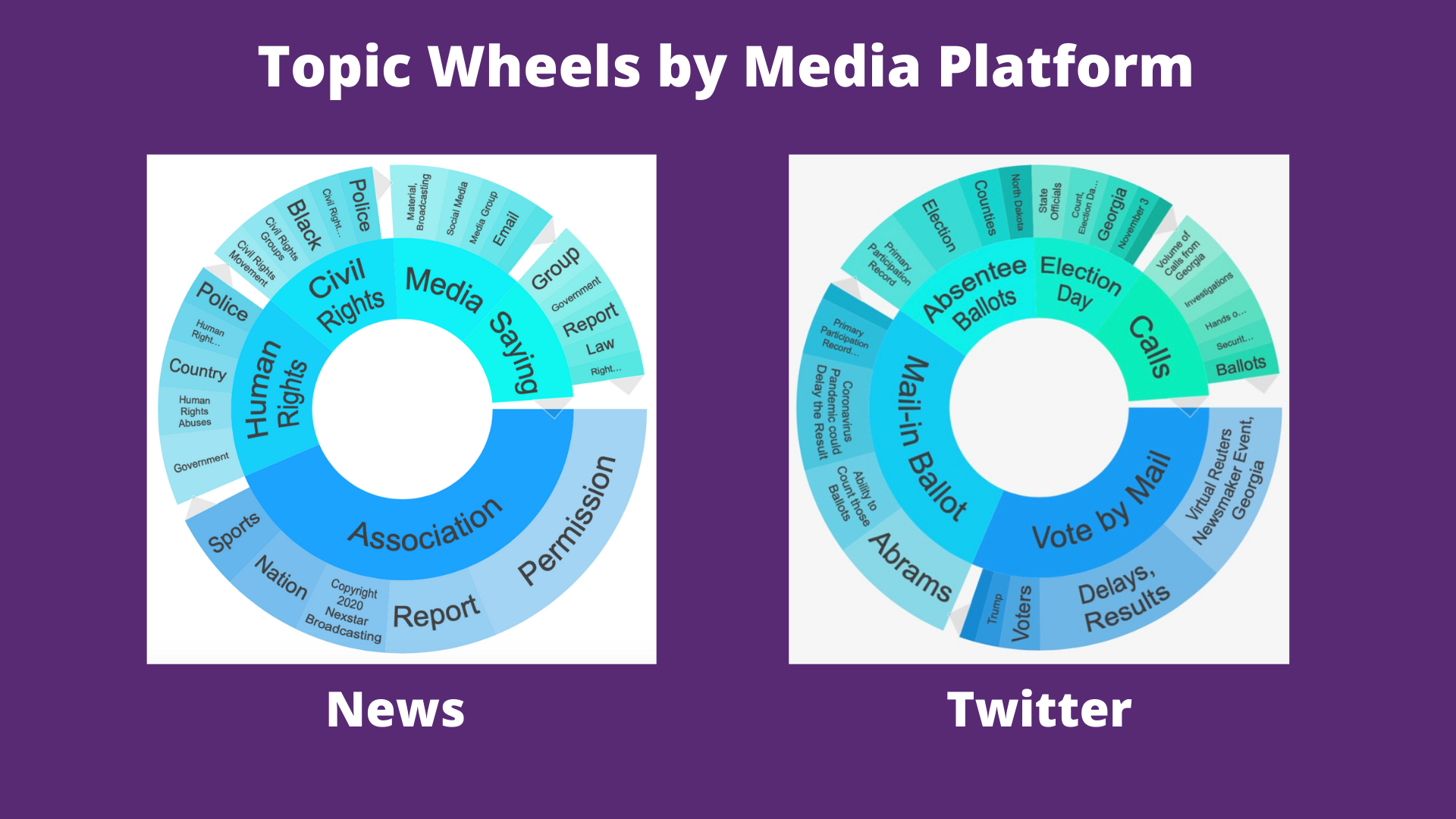By Samantha Bonnet, Giulia Carlton, and Kate Lee

We analyzed the effects of COVID-19 on engagement regarding the topic of mail-in voting on both Twitter and News outlets. Engagement, for our purposes, is measured in mentions. On both Twitter and in the News, we see a spike in engagement for the mail-in voting topic. As shown in our spike analysis, the highest peak occurs on June 9th, 2020, the day of the Georgia Primary election.
This primary election occurred in an unprecedented time in our nation’s history – during a global pandemic. Therefore, much of the voting content on both platforms had no choice but to also mention COVID-19 as a factor in our election, as shown in the tweets we have included. Voting is always a popular media topic around election dates, but this year we see a spike in specifically the mail-in method of voting because the presence of COVID-19 made mail-in voting a much more necessary option this year for citizens who are too vulnerable or unable to vote in person.
COVID-19 contributes to the increased engagement around the topic of mail-in voting because mail-in voting became a controversial topic this year. For engagements that favored mail-in voting, COVID-19 was a justification for why it is important (LWV of Florida, Henry Rosoff). For engagements that challenged mail-in voting, COVID-19 was deemed an excuse, but nevertheless mentioned in the media.

The prevalent topics displayed in our topic wheels include “human rights, civil rights, association, vote by mail, and absentee ballots” which are all topics that can also be connected to COVID-19 because of the issues the pandemic has caused within the realm of human rights, public distrust in absentee voting, and related topics. The conversation of mail-in voting has clearly increased during election times, and COVID-19 has undoubtedly contributed to those increased engagements.


